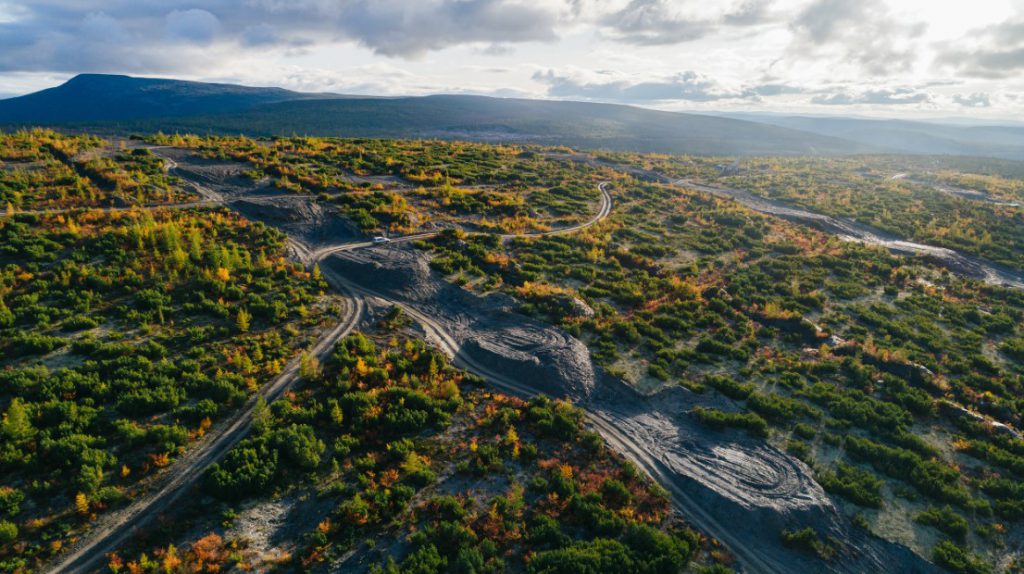Russia to become one of world’s largest gold and platinum group metals producers within next decade

Russia plans to become one of the world’s largest producers of gold and platinoids within the next decade by starting development of the Sukhoi Log and Fedorova Tundra Projects – two of the country’s largest resource-rich regions in terms of gold and platinum group metals reserves respectively, according to recent statements by senior state officials and analysts.
Regarding gold, particular attention will be paid to the development of Sukhoi Log, the world’s largest undeveloped greenfield gold project, located in the Irkutsk region of Russia.
So far, development of the field has been advancing at a slower pace, although this may change. Development of Sukhoi Log will be carried out by Polyus, the largest gold miner in Russia.
The Russian federal government places big hopes on the development of Sukhoi Log, as, according to its calculations, the project may bring up to RUB 470 billion (US$6 billion) of revenue to the state budget until 2039.
According to Alexei Bezprozvannykh, Deputy Head of the Russian Ministry of Industry and Trade, annual output of the mine may reach about 70 tonnes, while the entire project may create up to 2.500 new jobs in the Russian mining sector. By 2026, Sukhoi Log will become the largest operating gold field in Russia.
As part of preparations for the project, the airport in the city of Bodaibo, (Irkutsk region), will be reconstructed, the railway infrastructure will be expanded and new roads will be built.
Reserves at Sukhoi Log are estimated at 40 million ounces of gold contained in 540 million tonnes. As part of the plans, Polyus will build the mine and processing plant with a capacity of 33.2 million tonnes of ore per year between 2022 and 2026. Total volume of investments in the project will reach about US$3.3 billion.
The same plans are for Fedorova Tundra, which is the largest platinoid field in Europe being located in the Murmansk region (Northern Russia).
Investment in the project at the initial stage will reach RUB 60 billion (US$825 million). Development of the project will allow the production of about 250,000 tonnes of concentrate and more than 8 tonnes of final products – platinoids, mainly palladium, platinum and rhodium – per year. Overall reserves of the field are estimated at 350 tonnes.
The project, which is located in the central part of the Kola Peninsula, in the area of ​​Lake Inchyavr, currently has the status of being the largest PGM deposit in Europe. It was discovered in 1935, although its reserves were not officially assessed until the beginning of the 2000s.
Development will exceed 25 years.
Direct implementation of the project is expected to be carried by the JSC Fedorovo Resources enterprise. So far, the Russian federal government, together with authorities of the Murmansk region, have already promised to provide all the needed support to the investor.
According to Olga Kuznetsova, Deputy Governor of the Murmansk region, since the field is extremely remote, the Russian government has decided to allocate about RUB 6 billion to build necessary infrastructure.
The development of the field was initially planned with the participation of Barrick Gold. In 2001, it even established ZAO Fedorovo Resorses and purchased a license for the development of the field.
By 2005, 167 exploration holes had been drilled. The proven value of the palladium and platinum reserves were estimated at US$27 billion, while the start of mining was initially planned for 2009. By this time the company planned to built two open pits with a total productivity of at least 12 million tonnes of ore annually.
In 2010, it was planned to start construction of a mining and processing plant. However, the global financial crisis of 2008 forced Barrick Gold to reconsider plans and suspend the development of Fedorova Tundra. Since then, the project has stopped. In spring 2020, the rights to develop the Fedorova Tundra were acquired by a Russian consortium of enterprises with participation of the local state corporation Rostec.
The start of mining is now scheduled for 2027. By that time, two open-pit mines and a mining and processing complex with a capacity of 15-16 million tonnes are expected to be built. The project will create more than 1,200 new jobs.
By Eugene Gerden
